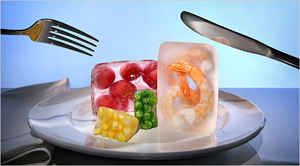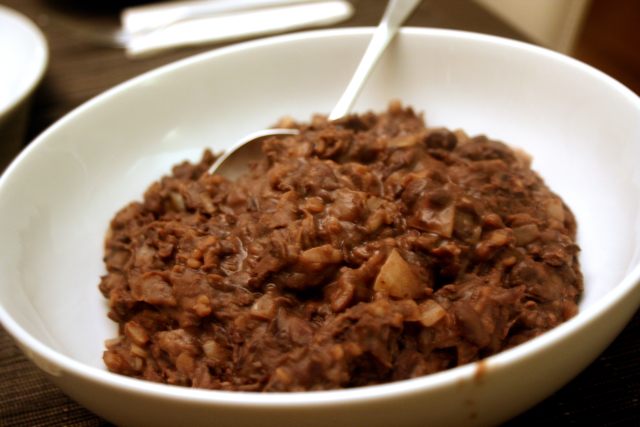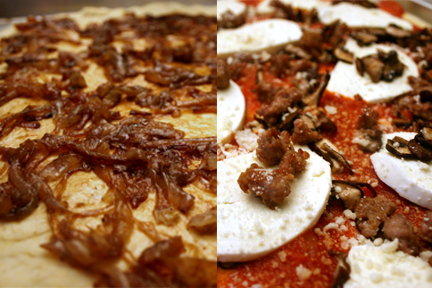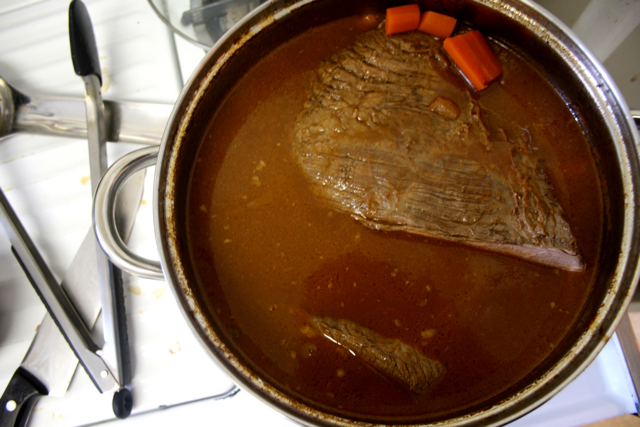Fish tacos: I hear they’re transcendent, but impossible to find in New York. Pinche Tacqueria on Mott Street (they also have a place on Lafayette now) makes a pretty tasty one, but I have no West Coast reference point. Anyway, Bittman’s recipe for fish tacos is the central point for his “Weekday Mexican-Style Spread,” which also includes refried beans, guacamole, and salsa.
Now, Taco Night has always been a favorite in the Fishner house. My mom makes the most delicious white people tacos in the world: ground turkey, Old El Paso taco seasoning, diced tomatoes, cucumbers and grated cheese. They’re great. They are totally inauthentic and totally amazing. No lime wedges, no radish slices, and sure as hell no cilantro. I’ve never seen anyone else serve cucumbers with tacos, but you should try it sometime, it’s quite nice.
So I’m not ashamed to admit what drew me to this menu in How to Cook Everything: the salsa Bittman suggests, Mexican Cheese Salsa, has cucumbers! Feeling validated by this fact, we decided it was the perfect choice for dinner.
Guacamole, we’ve covered before (the menu actually suggests Crunchy Corn Guacamole, which is the same thing with 1/2 cup corn thrown in, but no corn was to be had).
The salsa is very simple: you’ve got diced tomatoes, cucumbers, salt, pepper, lime juice, onion, and minced chile (I used a jalapeno) along with 1/2 cup of queso fresco. This stuff is simple, really fresh tasting, and perfect for tacos (especially if you like them with cucumbers, which you probably will). It will only get better once tomato season arrives! I can’t wait for tomato season. But I digress.
Now, the fish taco recipe is very flexible; it’s listed as “Fish Tacos, Four Ways,” because you can poach the fish, as it’s suggested in the main recipe, but you can also grill, broil, or fry the fish. We opted for broiling, as it seemed the easiest: throw some olive oil, salt and pepper on the fish, stick it in the broiler until it’s just barely cooked through, and you’re good to go.
So that’s pretty much the fish tacos; serve them with lime wedges, that rare essential garnish. I don’t know about you, but I just need some extra lime juice to squeeze down on these guys.
Meanwhile, the refried beans, something that I did not expect to taste as good as it did. You take 3-4 cups of beans and mash them in some hot fat; whether it’s lard, butter, or neutral oil is up to you (we opted for neutral oil, and it was still delicious). Then you add some onion, cumin, and cayenne (we were out of cayenne, and so we used some chili powder instead which worked pretty damn well) and let it cook until the onions are soft. There is room for lots of interpretation on this one. Finally, just add some of the bean liquid to thin it out to the consistency you like. Delicious.
This was definitely one of the top five meals since the project began. Spring is here, and this all tasted like it. Are you all siked? I am.


















































